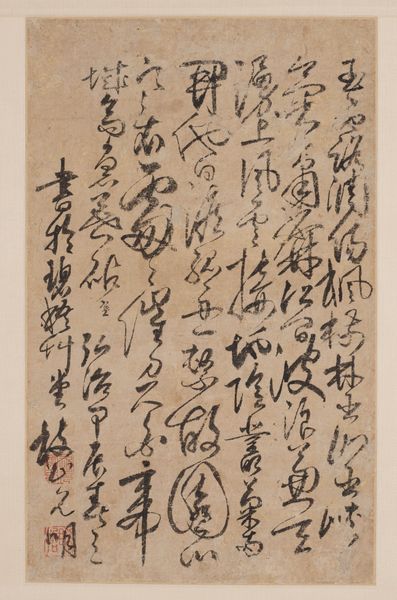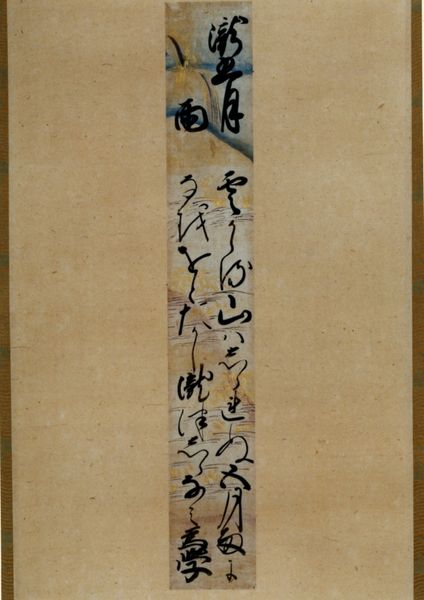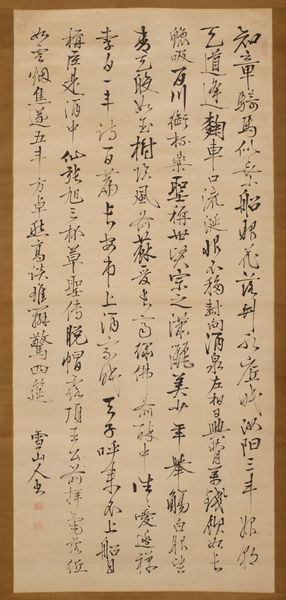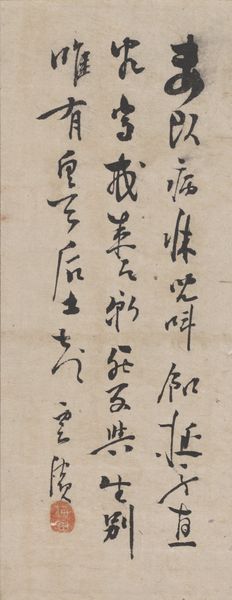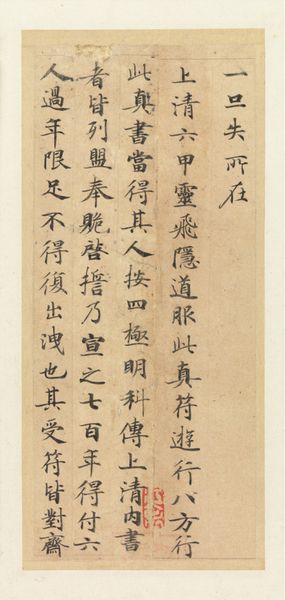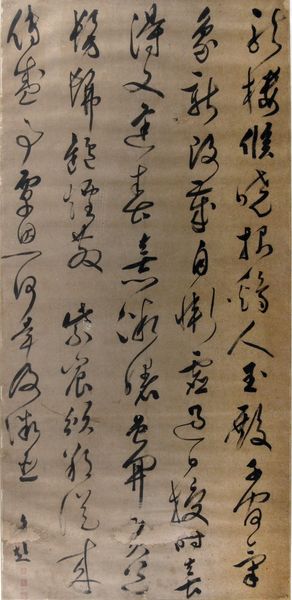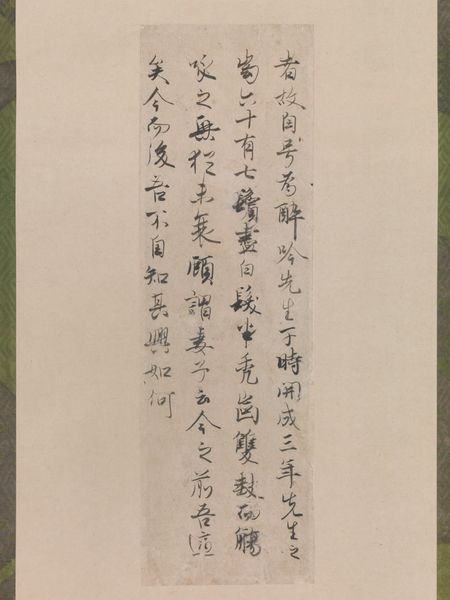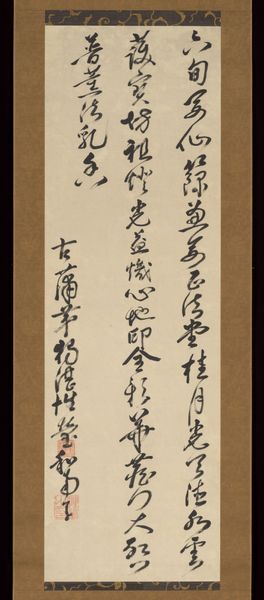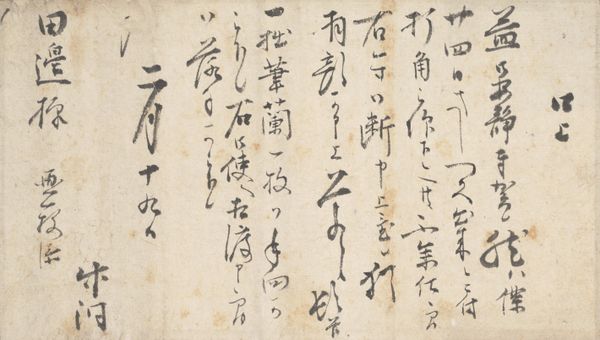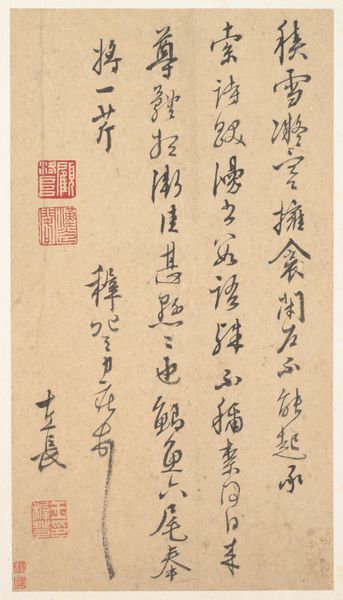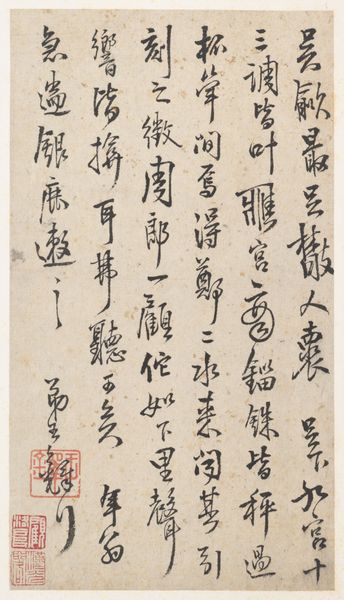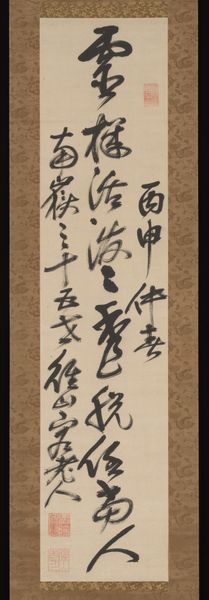
Cursive Script Calligraphy (Ts'ao-shu) c. early 16th century
0:00
0:00
paper, ink-on-paper, hanging-scroll, ink
#
asian-art
#
paper
#
ink-on-paper
#
hanging-scroll
#
ink
#
abstraction
#
china
#
line
#
repetition of line
#
calligraphy
Dimensions: 50 x 12 1/2 in. (127 x 31.8 cm)
Copyright: Public Domain
Editor: This hanging scroll presents Wu Yingmao's "Cursive Script Calligraphy (Ts'ao-shu)" from the early 16th century. The ink on paper is quite striking, yet I'm not sure how to read or interpret the work. How does the historical context affect its understanding? Curator: Indeed. Consider that calligraphy in Ming Dynasty China wasn't merely decorative. It was deeply tied to the scholar-official class and served as a public performance of education, taste, and moral standing. How does this knowledge influence your perception? Editor: Knowing that it was a display of skill within the intellectual elite gives the work a feeling of exclusivity. It’s less a communication to the masses and more a demonstration among peers. Curator: Precisely. The “Ts'ao-shu,” or cursive script, pushes this further, demanding the viewer be literate in not just characters, but a highly stylized form. What do you think this suggests about the patronage system in that era? Editor: Maybe the patronage of art depended on being literate and highly educated. Does the fact that is now on display here, in a modern museum space, change that dynamic? Curator: Absolutely. Its display shifts the context. Now, divorced from its original socio-political role, it functions more as a historical artifact, prompting viewers to contemplate cultural and artistic values across time. What did you notice in the art when we started, and how is that changed by our conversation? Editor: Well, I thought it looked elegant. Now, knowing more, I appreciate the historical weight behind it. It seems to be not only about art and skill, but power, status, and intellect in society. Curator: And, thinking further, how museums themselves shape what stories are being told and who has access to them! Thank you; that was enlightening!
Comments
No comments
Be the first to comment and join the conversation on the ultimate creative platform.
